
Fernando Blanco
@fernandoblancos.bsky.social
Paleobiologist studying the evolution of ancient ecosystems/Postdoc researcher at Estación Biológica de Doñana/Tocateclas
9/ This paper is the result of over 7 years of work—a true collective effort. Huge thanks to all my co-authors for making this possible! @ohsanisidro.bsky.social @singerstone.bsky.social @amniotalab.bsky.social et al.
📸 @singerstone.bsky.social
📸 @singerstone.bsky.social
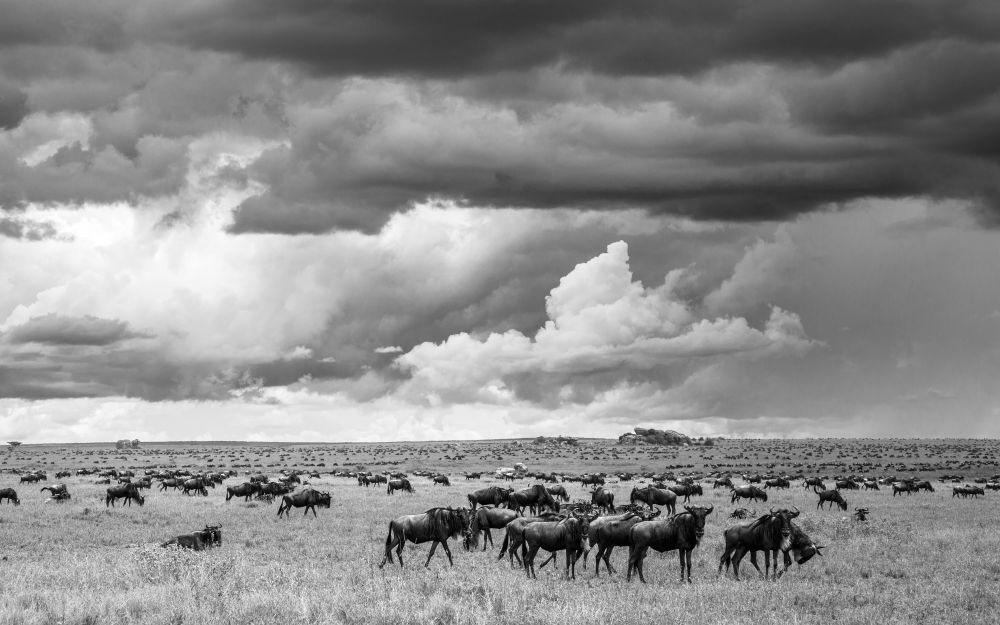
June 5, 2025 at 9:15 AM
9/ This paper is the result of over 7 years of work—a true collective effort. Huge thanks to all my co-authors for making this possible! @ohsanisidro.bsky.social @singerstone.bsky.social @amniotalab.bsky.social et al.
📸 @singerstone.bsky.social
📸 @singerstone.bsky.social
8/ But here’s the concern:
We are now in a period of accelerated functional loss—driven by habitat destruction, climate change, and overexploitation.
If this continues, we may be on the brink of a third global tipping point—one driven by humans.
We are now in a period of accelerated functional loss—driven by habitat destruction, climate change, and overexploitation.
If this continues, we may be on the brink of a third global tipping point—one driven by humans.
June 5, 2025 at 9:14 AM
8/ But here’s the concern:
We are now in a period of accelerated functional loss—driven by habitat destruction, climate change, and overexploitation.
If this continues, we may be on the brink of a third global tipping point—one driven by humans.
We are now in a period of accelerated functional loss—driven by habitat destruction, climate change, and overexploitation.
If this continues, we may be on the brink of a third global tipping point—one driven by humans.
7/ Despite major extinctions (including the Late Pleistocene megafaunal collapse), the basic functional scaffolding of herbivore faunas stayed stable for the last 4.5 million years.
Ecosystems “changed players,” but kept the same formation—until now.
Ecosystems “changed players,” but kept the same formation—until now.
June 5, 2025 at 9:14 AM
7/ Despite major extinctions (including the Late Pleistocene megafaunal collapse), the basic functional scaffolding of herbivore faunas stayed stable for the last 4.5 million years.
Ecosystems “changed players,” but kept the same formation—until now.
Ecosystems “changed players,” but kept the same formation—until now.
6/ 🌀 Second tipping point (~10 Ma):
Driven by global aridification and the spread of C4 grasslands, this restructured herbivore faunas again. Forested browsers declined, grazers with tougher teeth rose. Functional diversity began a long decline that continues today.
June 5, 2025 at 9:13 AM
6/ 🌀 Second tipping point (~10 Ma):
Driven by global aridification and the spread of C4 grasslands, this restructured herbivore faunas again. Forested browsers declined, grazers with tougher teeth rose. Functional diversity began a long decline that continues today.
5/ This event also led to an acceleration in functional diversity increase. For the first time, all major herbivore orders—Proboscidea, Artiodactyla, and Perissodactyla—coexisted across continents, expanding ecological roles and reshaping ecosystems at a global scale.
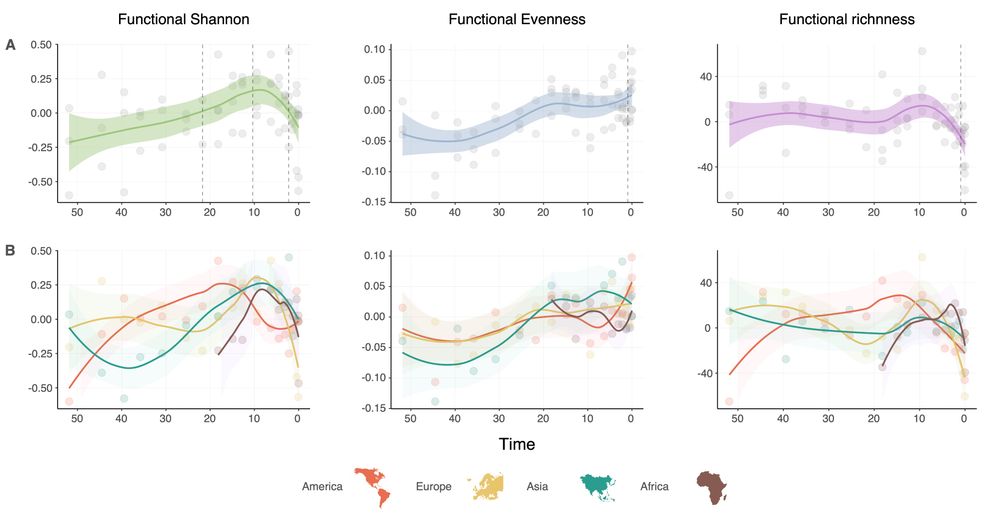
June 5, 2025 at 9:13 AM
5/ This event also led to an acceleration in functional diversity increase. For the first time, all major herbivore orders—Proboscidea, Artiodactyla, and Perissodactyla—coexisted across continents, expanding ecological roles and reshaping ecosystems at a global scale.
4/ 🌀First tipping point (~21 Ma):
Triggered by tectonics—Africa and Eurasia connected via the Gomphotherium land bridge.
This unleashed a wave of faunal migrations and global functional reorganization (Proboscideans out of Africa for the first time).
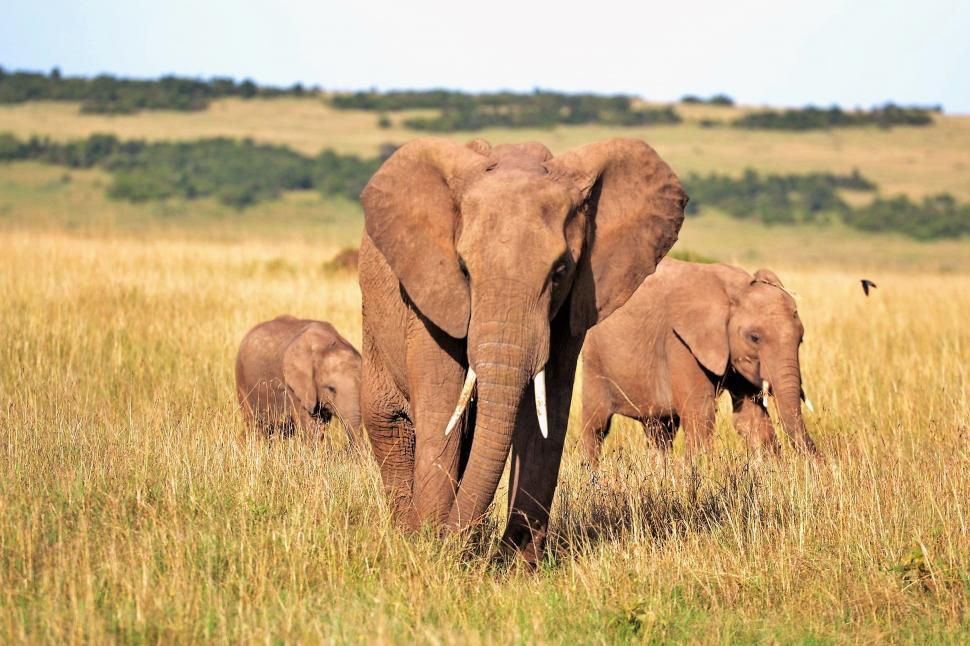
June 5, 2025 at 9:13 AM
4/ 🌀First tipping point (~21 Ma):
Triggered by tectonics—Africa and Eurasia connected via the Gomphotherium land bridge.
This unleashed a wave of faunal migrations and global functional reorganization (Proboscideans out of Africa for the first time).
3/ Across time, we found long phases of functional stability, where ecosystems retained their structure despite species turnover.
But we also found two major, irreversible tipping points in global herbivore faunas—moments of drastic ecological reassembly.
But we also found two major, irreversible tipping points in global herbivore faunas—moments of drastic ecological reassembly.
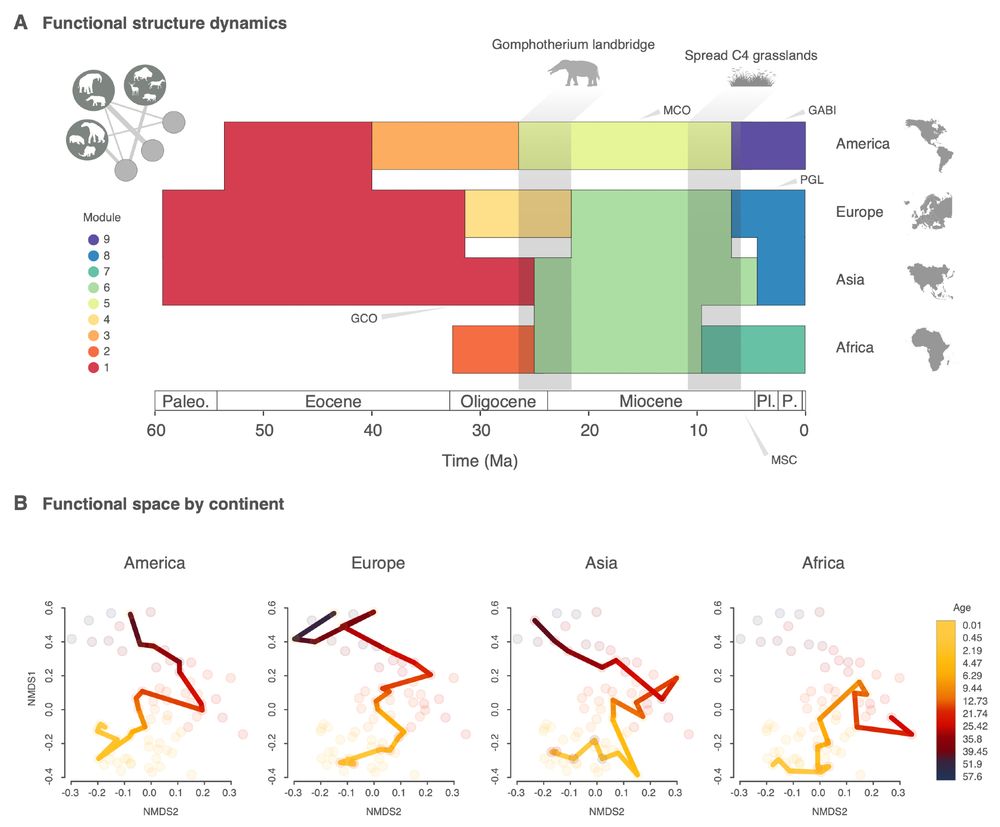
June 5, 2025 at 9:12 AM
3/ Across time, we found long phases of functional stability, where ecosystems retained their structure despite species turnover.
But we also found two major, irreversible tipping points in global herbivore faunas—moments of drastic ecological reassembly.
But we also found two major, irreversible tipping points in global herbivore faunas—moments of drastic ecological reassembly.
2/ We used network analysis and trait data (like body size & tooth shape) from 3,000+ species to reconstruct the functional structure of global ungulate ecosystems over the past 60 million years.
Rather than focusing on taxonomy, we asked: What ecological roles they played?
Rather than focusing on taxonomy, we asked: What ecological roles they played?
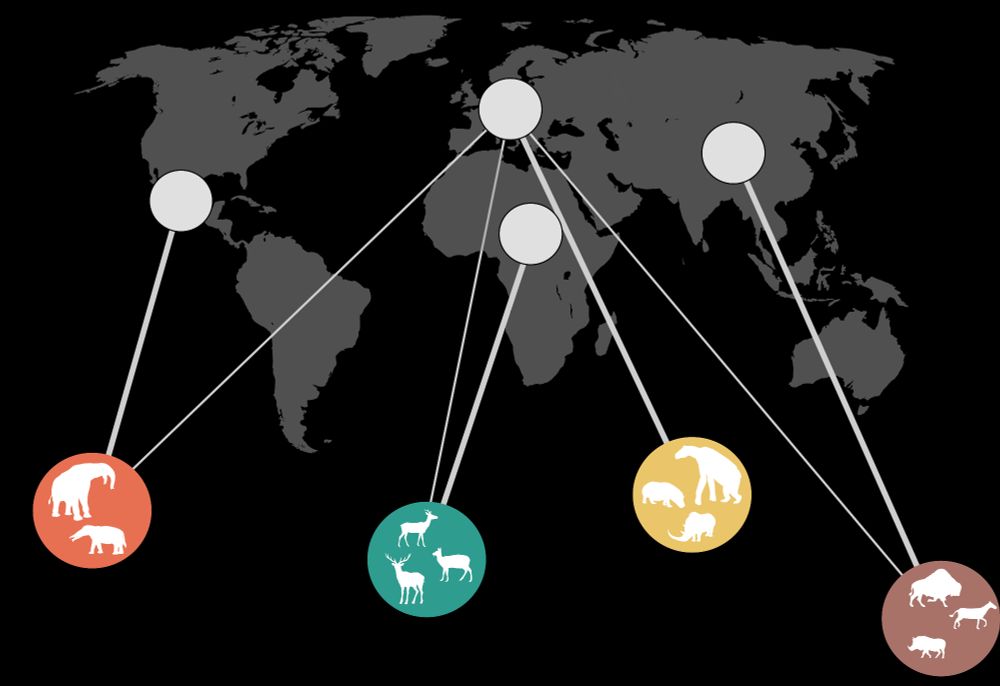
June 5, 2025 at 9:12 AM
2/ We used network analysis and trait data (like body size & tooth shape) from 3,000+ species to reconstruct the functional structure of global ungulate ecosystems over the past 60 million years.
Rather than focusing on taxonomy, we asked: What ecological roles they played?
Rather than focusing on taxonomy, we asked: What ecological roles they played?
1/ Large herbivores (like ancient elephants, rhinos, deer) aren’t just big plant-eaters—they’re ecosystem engineers. They shape landscapes, disperse seeds, and influence soil and fire dynamics.
But how did they evolve as climates and continents shifted?
📸 @singerstone.bsky.social
But how did they evolve as climates and continents shifted?
📸 @singerstone.bsky.social

June 5, 2025 at 9:12 AM
1/ Large herbivores (like ancient elephants, rhinos, deer) aren’t just big plant-eaters—they’re ecosystem engineers. They shape landscapes, disperse seeds, and influence soil and fire dynamics.
But how did they evolve as climates and continents shifted?
📸 @singerstone.bsky.social
But how did they evolve as climates and continents shifted?
📸 @singerstone.bsky.social

